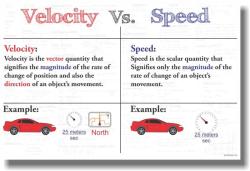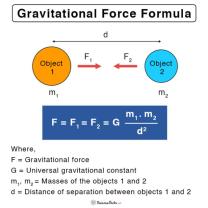How to determine the units for angular velocity?
Angular velocity is a measure of how quickly an object is rotating around an axis. It is a vector quantity, and its units depend on the system of units you are using. The most common units for angular velocity are radians per second (rad/s) in the International System of Units (SI). Here's a comprehensive guide on how to determine the units for angular velocity:
Define Angular Displacement:Angular velocity is often defined in terms of angular displacement (θ), which is the change in the angle of rotation. Angular displacement is measured in radians (rad). One full rotation around a circle is equal to 2π radians.
Time Interval:Angular velocity is defined as the rate of change of angular displacement with respect to time. To determine the units, you need to include the unit of time. Common units of time used are seconds (s).
Formula for Angular Velocity:The formula for angular velocity (ω) is:
ω = Δθ / Δt
Where:
- ω represents angular velocity (in radians per second, rad/s).
- Δθ represents the change in angular displacement (in radians, rad).
- Δt represents the change in time (in seconds, s).
Unit Analysis:To determine the units for angular velocity (ω) based on the formula, perform a unit analysis:
ω (rad/s) = Δθ (rad) / Δt (s)
- Angular displacement (Δθ) is in radians (rad).
- Time interval (Δt) is in seconds (s).
Therefore, the units for angular velocity are radians per second (rad/s).
In summary, angular velocity is measured in radians per second (rad/s) when using the International System of Units (SI). If you're working with different units, you'll need to convert them to radians and seconds to ensure consistency.
Keep in mind that in some practical situations, degrees per second (°/s) may be used, but it's essential to remember that radians are the SI unit for angular measurements, and using radians for angular velocity calculations is often more appropriate in scientific and engineering contexts.
Determining the Units for Angular Velocity
Angular velocity is the rate of change of an angle. It is a vector quantity, meaning that it has both magnitude and direction. The magnitude of angular velocity is measured in radians per second (rad/s).
The units of angular velocity can be derived from the units of angular displacement and time. Angular displacement is measured in radians, and time is measured in seconds. Therefore, the units of angular velocity are:
Angular velocity = Angular displacement / Time = radians / seconds = rad/s
Angular Velocity Measurement in Degrees and Radians
Angular displacement can be measured in either degrees or radians. One radian is equal to 180/π degrees. Therefore, the conversion between degrees and radians is as follows:
1 radian = 180/π degrees
1 degree = π/180 radians
Angular velocity can also be measured in either degrees per second (°/s) or radians per second (rad/s). The conversion between these units is as follows:
1 rad/s = 180/π °/s
1 °/s = π/180 rad/s
Converting Between Different Angular Velocity Units
To convert between different angular velocity units, simply use the following conversion factors:
1 rad/s = 180/π °/s
1 °/s = π/180 rad/s
For example, to convert 10 rad/s to °/s, you would multiply by 180/π:
10 rad/s * 180/π = 325.98 °/s
To convert 100 °/s to rad/s, you would multiply by π/180:
100 °/s * π/180 = 1.7453 rad/s
Angular Velocity Unit Conversions in Practice
Angular velocity unit conversions are commonly used in a variety of engineering and scientific applications. For example, a mechanical engineer might need to convert the angular velocity of a rotating shaft from rpm to rad/s. An electrical engineer might need to convert the angular velocity of an electric motor from °/s to rad/s.
Here are a few examples of angular velocity unit conversions in practice:
- A car engine might rotate at 3000 rpm. To convert this to rad/s, we would multiply by 2π/60:
3000 rpm * 2π/60 = 314 rad/s
- A fan might rotate at 1200 °/s. To convert this to rad/s, we would multiply by π/180:
1200 °/s * π/180 = 20.94 rad/s
- A satellite might orbit the Earth at 1.7453 rad/s. To convert this to rpm, we would divide by 2π/60:
1.7453 rad/s * 60 / 2π = 16.75 rpm
The Significance of Angular Velocity Units in Physics
Angular velocity is an important concept in physics that is used to describe the rotational motion of objects. Angular velocity units are significant because they allow us to measure and compare the rotational motion of different objects.
Angular velocity units are also important for calculating other physical quantities, such as torque, angular momentum, and kinetic energy.
Here are a few examples of the significance of angular velocity units in physics:
- The torque on a rotating object is proportional to its angular velocity. This means that in order to calculate the torque on an object, we need to know its angular velocity in rad/s.
- Angular momentum is a conserved quantity, meaning that it remains constant unless an external torque is applied. To calculate angular momentum, we need to know the angular velocity of the object in rad/s.
- The kinetic energy of a rotating object is proportional to the square of its angular velocity. This means that in order to calculate the kinetic energy of a rotating object, we need to know its angular velocity in rad/s.
Overall, angular velocity units are important in physics because they allow us to measure and compare the rotational motion of different objects, and to calculate other physical quantities, such as torque, angular momentum, and kinetic energy.












